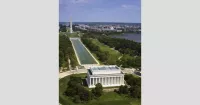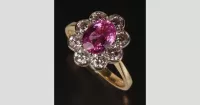Cherry blossoms, or sakura, are the flowers of trees in the *Prunus* subgenus *Cerasus*, typically referring to ornamental cherry trees rather than fruit-bearing ones. A key characteristic is their vanilla-like fragrance, largely due to the presence of coumarin. These blossoms are widely appreciated for their aesthetic beauty and symbolic significance, particularly in Japanese culture.
1912: Cherry Trees Presented to the United States
In 1912, Japan presented cherry trees to the United States as a token of friendship. This event significantly contributed to the spread of ornamental cherry trees in Europe and the United States.
1921: Yoshino Cherry Bloom Date in Washington, D.C.
In 1921, the full bloom date of the Yoshino cherry in the Tidal Basin in Washington, D.C. was April 5. By 2021, it was March 31, indicating an earlier blooming period.
September 1930: Establishment of the Sakurakai
In September 1930, young officers within the Imperial Japanese Army established the Sakurakai, or Cherry Blossom Society. This secret society aimed to reorganize the state along totalitarian militaristic lines, potentially through a military coup d'état.
1932: Yosano's Poetry Urges Soldiers to Endure Suffering
In 1932, Akiko Yosano's poetry urged Japanese soldiers to endure suffering in China and compared the dead soldiers to cherry blossoms, as a message of enduring suffering.
1952: Current Logo of Brave Blossoms
Since 1952, the Japan national rugby union team, known as the "Brave Blossoms", has had their current logo with the cherry blossom emblem.
1975: Theory of Cherry Tree Origin Proposed
In 1975, three Japanese researchers proposed a theory that cherry trees originated in the Himalayan region. According to the theory, they spread eastwards to Japan before human civilization, when the Japanese archipelago was connected to the Eurasian continent.
1992: Classification of Cherry Trees Changed in Japan
In 1992, after a paper by Hideaki Ohba of the University of Tokyo, the classification of ornamental cherry trees in Japan shifted from the genus Prunus to Cerasus. For example, Cerasus incisa became the preferred scientific name over Prunus incisa.
2007: Riken Produces New Cherry Cultivar
In 2007, Riken produced a new cultivar named 'Nishina zao' by irradiating cherry trees with a heavy-ion beam. This cultivar is a mutation of the green-petaled ''Prunus serrulata'' 'Gioiko' (Gyoiko); it is characterized by its pale yellow-green-white flowers when it blooms and pale yellow-pink flowers when they fall.
2009: Shift in Sakura Zensen Tracking
Since 2009, private forecasting companies have largely taken over the tracking of the sakura zensen (cherry blossom front) in Japan. The Japanese Meteorological Agency (JMA) shifted its focus to data collection rather than forecasting.
2014: DNA Analysis of Cherry Tree Cultivars
In 2014, the Forestry and Forest Products Research Institute in Japan conducted DNA analysis of 215 cherry tree cultivars. The study revealed that many globally spread cultivars are hybrids of Oshima cherry and Prunus jamasakura (Yamazakura) with various wild species.
2021: Earliest Full Bloom Date Recorded in Kyoto
In 2021, the earliest full bloom date in 1200 years was recorded for Prunus jamasakura (Yamazakura) in Kyoto, Japan. Records show that the average peak bloom day in the 1850s was around April 17, but by the 2020s, it was April 5.
2023: Earlier Peak Bloom Observed in China
In 2023, it was observed in China that cherry blossoms have reached their peak bloom weeks earlier than they previously had a few decades ago. Data from Kyoto, Japan, and Washington, D.C., United States, also indicated that blooming periods are occurring earlier in those locations as well.
Mentioned in this timeline
The United States of America is a federal republic located...

Washington D C is the capital city and federal district...
China officially the People's Republic of China PRC is an...
Japan is an East Asian island country situated in the...

Tokyo officially Tokyo Metropolis is the capital and most populous...

Pink is a pale tint of red named after the...
Trending

2 months ago Virginia Vallejo, Pablo Escobar's ex, reveals health struggle: Suffered a brutal stroke.

7 months ago Jake Gyllenhaal's 'Othello' Snubbed by Tony Awards Despite Box Office Success with Denzel Washington.
8 days ago World Cup 2026 Draw: Brazil in Group C, France's Path

Maisie Williams is an English actress who gained widespread recognition for her role as Arya Stark in the HBO series...

2 months ago Dakota Johnson's Epic Response to 'Naked Dress' Queries and Red Carpet Fashion
21 days ago SpaceX Falcon 9 Launches Starlink Satellites from Cape Canaveral on 150th Mission.
Popular

Candace Owens is an American conservative political commentator and author...

Ilhan Omar is an American politician currently serving as the...

XXXTentacion born Jahseh Dwayne Ricardo Onfroy was a controversial yet...

Tom Cotton is an American politician and Army veteran currently...

Kelsey Grammer is an accomplished American actor producer and singer...
The Kennedy Center Honors are annual awards recognizing individuals and...